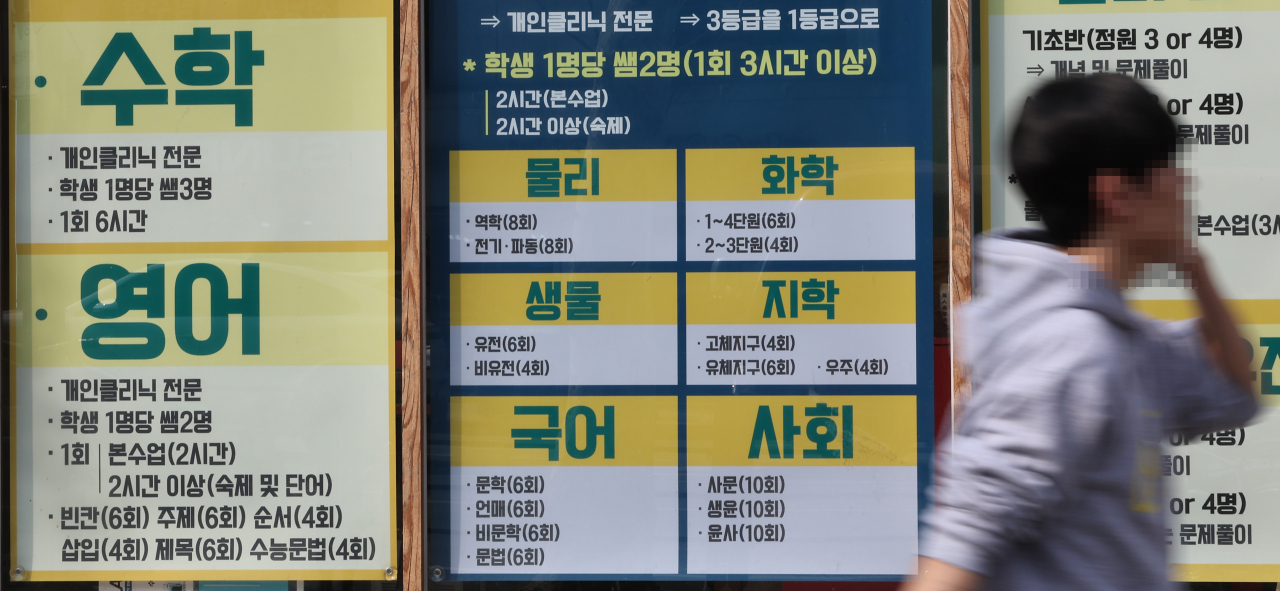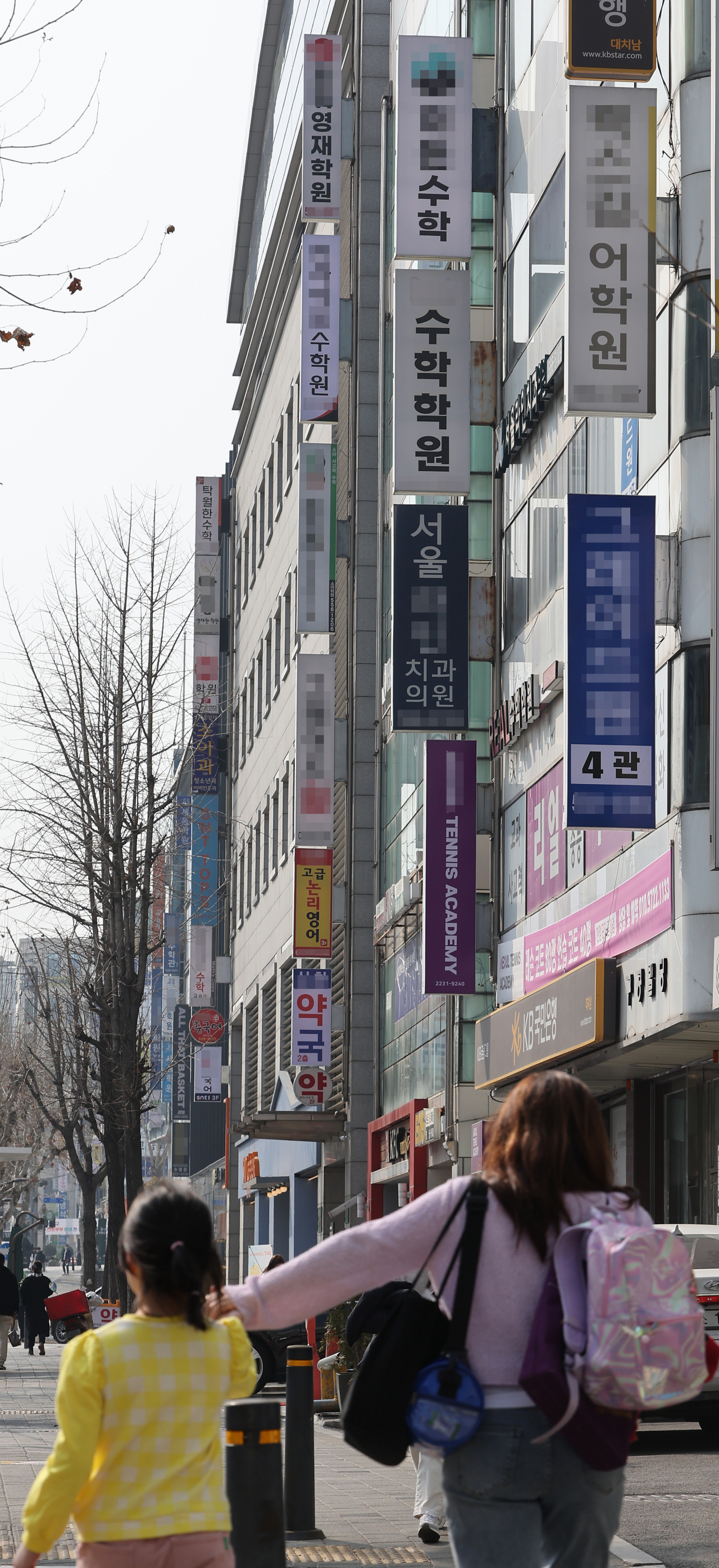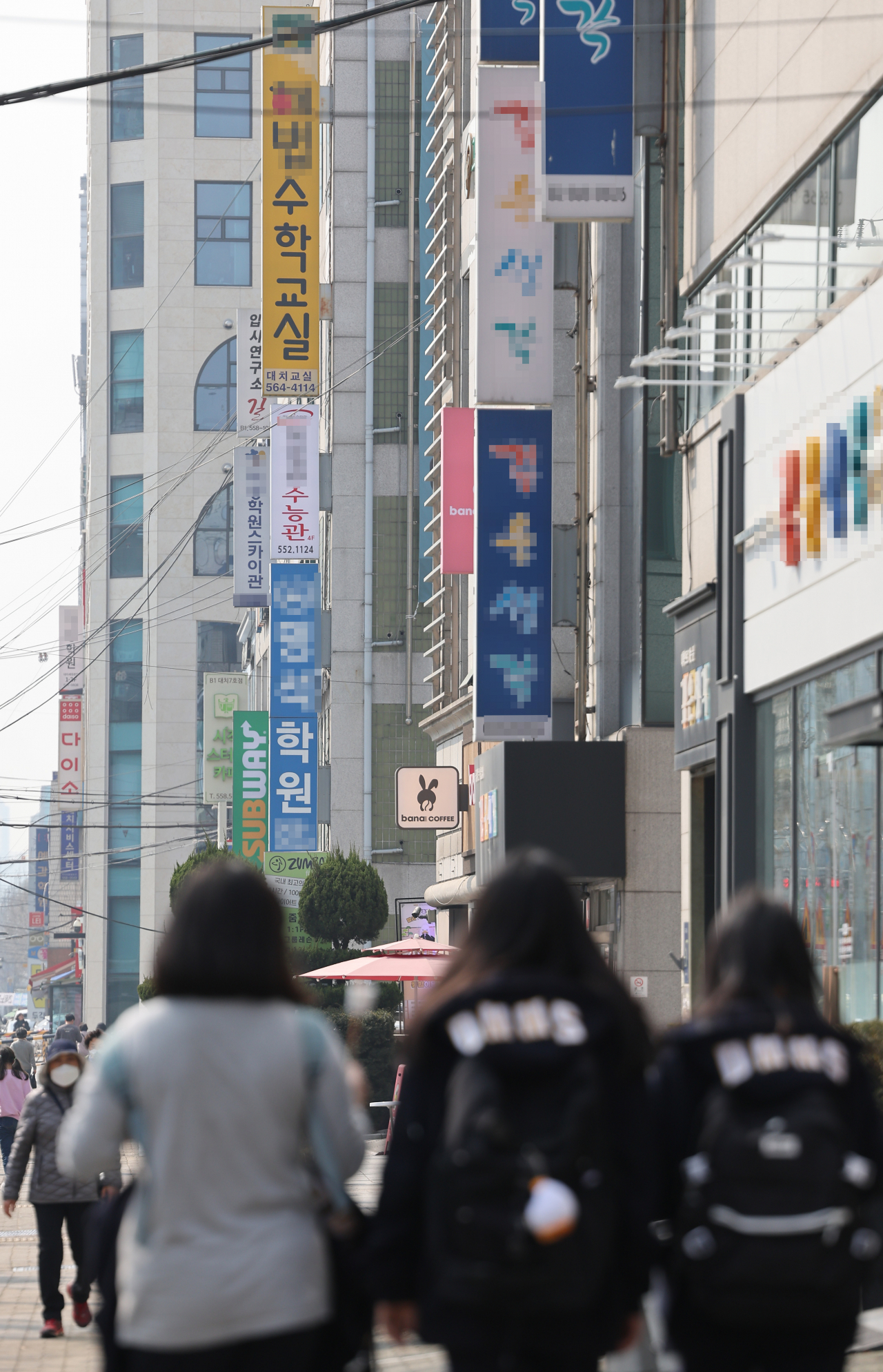
Like many parents, the ultimate goal that Cho Mi-jin, a 47-year-old mother in Seoul, has in mind is for her children to enter a prestigious university.
But she does not want her children to endure the intense competition and grueling years they would have to go through in public schools and private cram schools -- locally known as hagwon -- for that one common goal: admission to top universities through a high score on the Suneung, Korea's college entrance test. Instead, she has come up with her own plan.
Unlike the many parents who head to Daechi-dong, the Seoul district known as the hagwon mecca, Cho enrolled her then-third-grade twins in a foreign school after returning from Indonesia two years ago. At least in Korea, skirting the cutthroat educational landscape is the answer to a promising future, Cho says.
“There’s a Korean adage that one needs to be a doctor or lawyer to use their jobs as a medium of social mobility. So kids go to hagwon to raise scores that could help them get good jobs,” she said.
“Since schools only care about grades to foster first-class professionals, my only option was letting my children attend a foreign school."
Cho is one of a growing number of parents in Korea who are choosing to opt out of the public education system for their children. Foreign schools, also known as international schools, are educational institutions accredited by the Education Ministry that do not offer a Korean diploma. Instead, they use globally recognized programs like the UK-based International Baccalaureate and the US-based Advanced Placement. The schools are mainly comprised of international students with limited enrollment for Korean passport holders. For children of Korean nationals who wish to attend, there are strict prerequisites such as a minimum number of years enrolled at a school overseas. The aim for many students upon graduation is to attend a university outside Korea.
Escaping the Suneung rat race
Shin, a mother who only wished to be identified by her surname, took the same path for her child.
“As someone who experienced Suneung, I didn’t want to give my kid the avalanche of academic stress I went through. Schools here only focus on rote learning, and grades solely determine a student’s worth,” she said.
Shin said the burden she had experienced in high school added nothing but fatigue.
“I was lost, not knowing what to do (other than studying). That continued in university, and I coped with burnout. But that’s a time in life when students in the US chase after their dreams. Schools in Korea don’t teach kids; they teach subjects,” she said.
“Schools must educate students that academic thriving is not the only path to happiness and success. It shouldn’t be a place that presses students to receive the highest score,” she added.

Even today, students in Korean schools grapple with excelling in English, mathematics and Korean. They tend to see academic performance as their only source of validation and self-worth. At times, Shin wonders if students are born to be machines to study.
“Korean schools use relative grading, where scores depend on how students perform compared to their peers. Few are guaranteed high scores, so students have to be devoted to studying. But students at foreign schools adhere to an absolute grading policy, where students receive the same grade if they all perform at a given level,” she said.
The heated exam-centered education environment also made Seol, who wished to be identified only by her surname, look for an alternative.
“I was discontent with the education here. But since my elementary and middle school daughters have lived abroad, I sent them to an international school to let them be stress-free from tedious and test-focused classrooms. Students, especially in lower grades, need experiences outside the classroom to develop other skills, not cram schools.”
But that does not mean parents lack educational passion, according to Seol.
“Moms, especially those of high schoolers, do send their kids to hagwon in Daechi-dong, but it’s just that students have a more balanced life between school, private institutions and extracurricular activities,” she added.
As academic pressure negatively affects students, more parents are finding a way out from the Suneung, according to Christina Han, a secondary English educator at an international school.
Han noted that parents find foreign schools’ emphasis on nonacademic grades attractive, with students encouraged to participate in extracurricular activities.
“Moms are starting to see the adverse effects of a Korean school curriculum on their children, such as deteriorating mental health. And since they have experienced living abroad, parents want to re-create those experiences,” Han said.
“It may also go deeper than this in that it’s a generational idea where the older generation wants their children to have a better life, and one of the ways to do so is by preparing their children through English learning,” she added.
Lee Seo-jin, who runs a private English Institute in Jamsil-dong, Seoul, echoed that parents seek the benefits of a Western approach to pre-collegiate education to reduce pressure.
“Parents are willing to pay stiff tuition fees so their kids do not daily tailor-made lessons. One of the biggest pros of foreign schools is that parents don’t pass on to their children academic stress or pressure like the parents who send their kids to Daechi-dong.”
Lee pointed out that the English fever has also contributed to higher foreign school enrollment.
“Parents of Korean and foreign students find English crucial to surviving in competitive society. But it’s all about memorizing words in Korean schools and hagwon, while students of foreign schools learn meaningful things in and out of classrooms,” Lee said.
“If only parents could pull their children out of the fierce Suneung race and academic freedom, they would want to enroll their children in international schools (at any cost).”
Widening gaps in quality of education
While foreign schools are a solution for some parents, some worry that the growing popularity of Korean student enrollment at foreign schools worsens already-widening gaps in the quality of education in the country as well as entrenching social hierarchy.

Currently, Korea has 39 foreign schools, according to the ministry. Of them, admission is most coveted at the “big four”: Seoul Foreign School, Yongsan International School of Seoul, Korea International School and Seoul International School. Education offices said they do not have the number of Koreans attending foreign schools across the country because such information is outside of their jurisdiction.
A single year of tuition for a foreign school costs around 20 million to 40 million won ($15,000-$30,000) -- double the fee for a private school here and similar to the average annual salary of a Korean worker, which stood at 40.24 million won in 2021.
In December, independent lawmaker Rep. Min Hyung-bae proposed a bill co-sponsored by 12 other lawmakers to lower the maximum quota of Korean nationals at foreign schools from 50 percent to 30 percent.
He also suggested upping the minimum overseas living period for Korean nationals to qualify for the schools to five years, arguing that foreign schools had “lost their original purpose” of offering specialized education for foreign residents’ children.
At one foreign school in Daegu, Korean nationals account for nearly 80 percent of enrollment, an aide to Rep. Min told The Korea Herald.
"This has made competition among local students high, (prompting) a rise in tuition. There have been complaints that foreign children couldn't get in (for lack of available spots)," he said.
The bill's focus is on the “privileged," he added, referring to wealthy parents financially capable of sending children of Korean nationality to expensive foreign schools. The current quota has also made the education scene "unfair."
While some foreign schools have opposed the bill restricting the quota on Korean nationals, saying it hampers providing quality education to students and threatens their own sustainability, others have remained mum.
“There’s not much we can say at this point because it won’t affect students currently attending (the school), and if passed, the bill will be enacted in two or three years,” an official at SFS told The Korea Herald. The school declined to comment further.
Meanwhile, Koreans spent a record 26 trillion won ($20 billion) on private education in 2022, with spending on English the highest among subjects, data from Statistics Korea and the Education Ministry showed last week.
![[Exclusive] Korean military set to ban iPhones over 'security' concerns](http://res.heraldm.com/phpwas/restmb_idxmake.php?idx=645&simg=/content/image/2024/04/23/20240423050599_0.jpg&u=20240423183955)

![[Graphic News] 77% of young Koreans still financially dependent](http://res.heraldm.com/phpwas/restmb_idxmake.php?idx=645&simg=/content/image/2024/04/22/20240422050762_0.gif&u=)


